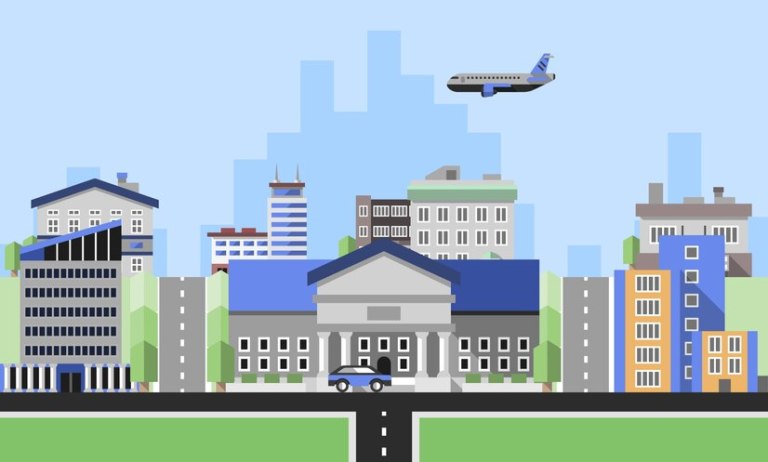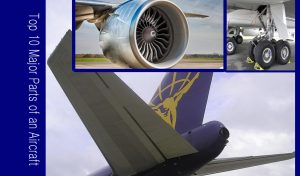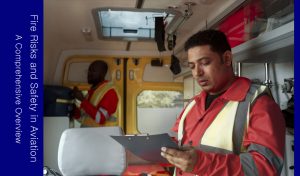The Economic Impact of Airfields on Local Communities, play a vital role in many parameters. Specially Airfields have a significant economic impact on local communities. They provide direct and indirect employment opportunities, generate tourist revenue, facilitate business development, increase property values, support infrastructure development, enable increased economic activity, improve access to markets and services, and promote environmental protection.

Direct and indirect employment
Airfields directly employ a large number of people, including pilots, flight attendants, air traffic controllers, baggage handlers, and other airport operations personnel. They also support a wide range of indirect jobs, such as those in the hospitality, transportation, and retail sectors.
This employment impact can be significant, especially in rural communities where airfields may be one of the largest employers in the area. For example, a study by the University of North Dakota found that the Grand Forks International Airport supports over 2,300 jobs and generates over $150 million in annual economic activity for the Grand Forks-East Grand Forks metropolitan area.
Tourist revenue
Airports play a key role in the tourism industry, bringing visitors to local communities and generating revenue for hotels, restaurants, attractions, and other businesses.
The tourism impact of airfields can be especially significant in communities that are located near popular tourist destinations. For example, a study by the Florida Department of Economic Opportunity found that the Orlando International Airport generates over $34 billion in annual economic activity for the Orlando area, much of which is related to tourism.
Business development
Airfields facilitate business development by providing businesses with access to new markets and suppliers. They also make it easier for businesses to attract and retain employees.
The business development impact of airfields can be especially significant for small and medium-sized businesses. For example, a study by the Small Business Administration found that small businesses that are located near airfields are more likely to grow and create jobs than small businesses that are not located near airfields.
Property values
Properties located near airports tend to have higher values than those located further away. This is because airports make it easier for people and businesses to travel to and from the area.
The property value impact of airfields can be significant, especially for commercial and residential properties that are located near major airports. For example, a study by the Federal Highway Administration found that a 1% increase in airport traffic can lead to a 0.5% increase in property values within a 5-mile radius of the airport.
Infrastructure development
Airports often serve as a catalyst for infrastructure development in local communities. This includes projects such as new roads, bridges, and public transit systems.
The infrastructure development impact of airfields can be significant, especially for rural communities that may not have access to major transportation networks. For example, a study by the American Association of State Highway and Transportation Officials found that airports generate over $10 billion in annual infrastructure spending.
Increased economic activity
Airports contribute to increased economic activity in local communities by stimulating demand for goods and services. This includes spending on transportation, accommodations, food and beverage, and retail goods.
The economic activity impact of airfields can be significant, especially for communities that are located near major airports. For example, a study by the Federal Aviation Administration found that U.S. airports generate over $1.4 trillion in annual economic output.
Improved access to markets and services
Airports improve access to markets and services for businesses and consumers in local communities. This is especially important for rural communities, which may not have access to major highways or rail lines.
The access to markets and services impact of airfields can be significant for businesses that rely on air transportation to move their products and services to market. For example, a study by the U.S. Department of Agriculture found that airports can increase the value of agricultural products by up to 10%.
Environmental protection
Airports are working to reduce their environmental impact and promote sustainability. This includes initiatives such as reducing noise and emissions, using renewable energy, and protecting wildlife.
The environmental protection impact of airfields is becoming increasingly important as communities become more aware of the need to protect the environment. For example, a study by the International Air Transport Association found that the aviation industry is committed to reducing its net carbon emissions to zero by 2050.
Conclusion
Airfields have a significant positive economic impact on local communities. They provide jobs, generate revenue, facilitate business development, increase property values, support infrastructure development, and enable increased economic activity. Airfields also improve access to markets and services for businesses and consumers, and they are working to reduce their environmental impact.
Strategies for maximizing the economic impact of airfields
Here are some strategies for maximizing the economic impact of airfields:
- Invest in airport infrastructure. This could include building new runways, terminals, and cargo facilities, as well as improving existing infrastructure. Investing in airport infrastructure will make it more attractive to airlines and businesses, and it will also improve the experience for passengers and shippers.
- Market the airfield to businesses. Communities can market their airfields to businesses by highlighting the benefits of being located near an airport, such as access to new markets and suppliers, and the ability to attract and retain employees. Communities can also offer tax incentives and other financial assistance to businesses that locate near their airfields.
- Develop tourism infrastructure. Communities can develop tourism infrastructure to attract more visitors to the area. This could include investing in hotels, restaurants, attractions, and transportation options. Communities can also work with airlines to develop tourism packages that include flights and accommodations.
- Work with airlines and tourism businesses. Communities can work with airlines and tourism businesses to develop marketing and promotional campaigns. This could include creating joint marketing materials, offering discounts and promotions, and hosting events. Communities can also provide airlines and tourism businesses with financial assistance to help them market their products and services.
- Measure the economic impact of the airfield. Communities can measure the economic impact of their airfields to track their progress and identify areas for improvement. This could involve collecting data on employment, tourism revenue, and business development. By measuring the economic impact of their airfields, communities can make informed decisions about how to best invest resources and maximize the economic benefits of their airfields.
In addition to these general strategies, there are a number of specific things that communities can do to maximize the economic impact of their airfields. For example, communities can:
- Develop a cargo hub. Cargo hubs can attract new cargo airlines and businesses, and they can also help to create jobs and generate revenue.
- Develop a maintenance, repair, and overhaul (MRO) facility. MRO facilities provide maintenance and repair services for aircraft. They can attract new businesses to the area, and they can also help to create jobs and generate revenue.
- Develop a free trade zone. Free trade zones are designated areas where goods can be imported and exported without paying tariffs or duties. This can make it more attractive for businesses to locate near airports, and it can also help to create jobs and generate revenue.
- Develop an aerotropolis. An aerotropolis is a city or region that has been developed around an airport. Aerotropolises can include a variety of businesses and industries, such as logistics, manufacturing, and tourism. By developing an aerotropolis, communities can maximize the economic impact of their airfields.
The specific strategies that are best for a particular community will depend on a number of factors, such as the size and location of the airport, the needs of local businesses, and the resources that are available. However, by following the general strategies outlined above, communities can maximize the economic impact of their airfields and create jobs, generate revenue, and improve the quality of life for residents.









